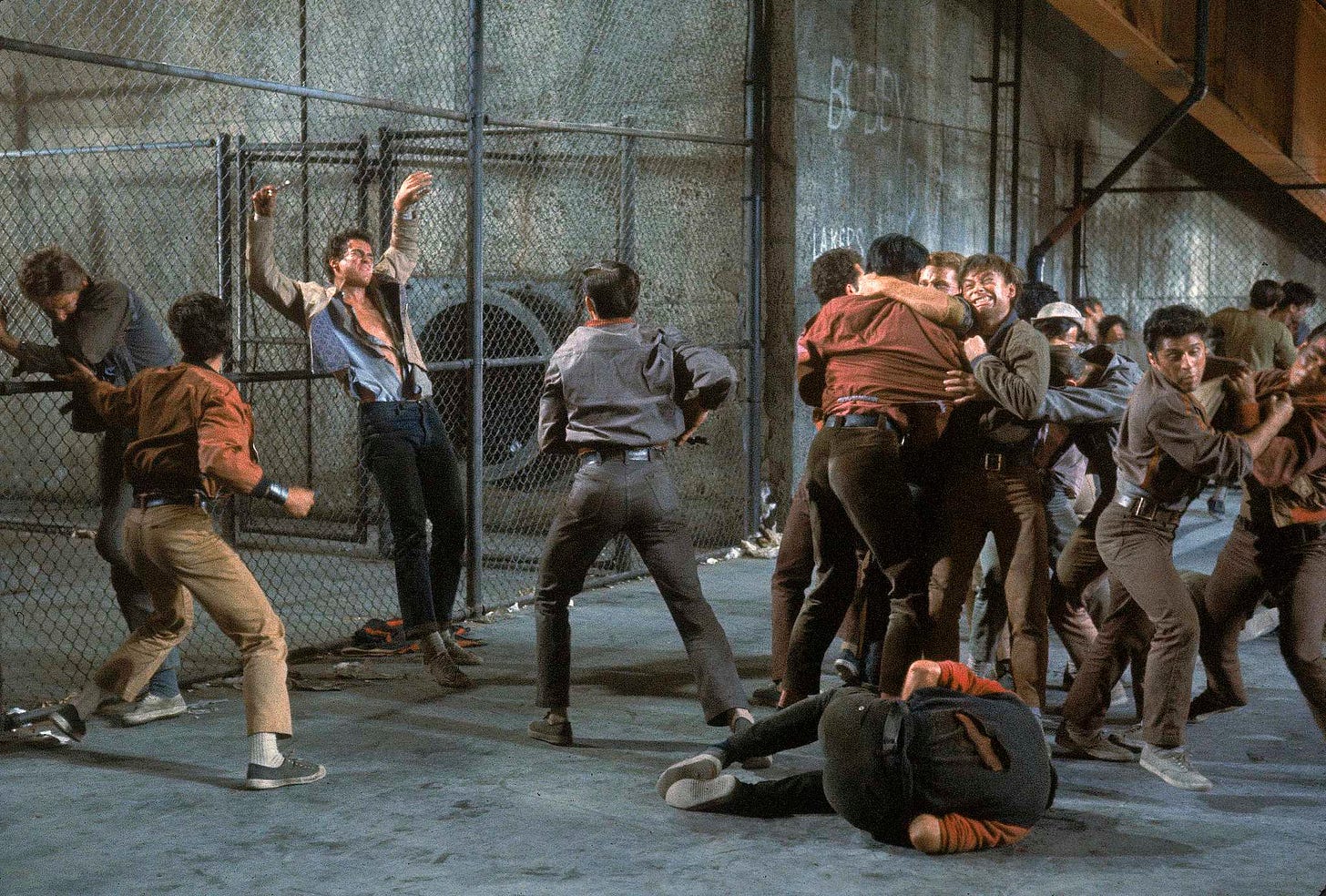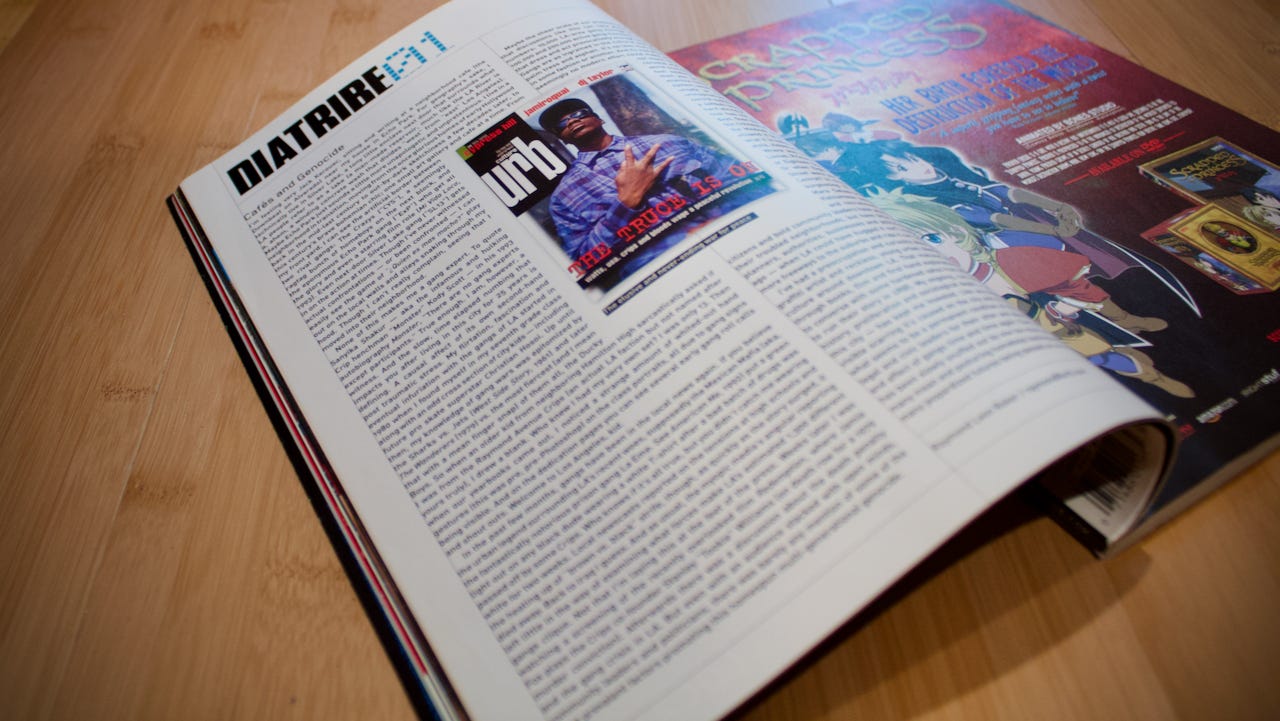Cafés and Genocide in the Gang Capital of America
My flirtation, fascination, and eventual infuriation with the gangs of LA (Originally published in September 2005)

Issue No. 129, September 2005
I’m feeling very Jack Kerouac, sitting and writing at a neighborhood cafe (the Downbeat on Alvarado) near my house in Echo Park. For geography’s sake, I technically live in Silver Lake, a trendy little enclave next door that surrounds what LA people call a lake (an artificial reservoir, much like the LA River is a winding concrete wash). Maybe Echo Park sounds a little more unapologetic and unpretentious. I live in a neighborhood in transition, moving from the once magnificent homes of early Hollywood back in the mid-last century to out-by-dark sketchiness a few decades later, to this century’s brave bohemian chic, one small art gallery and cafe at a time. From my front yard, I can see the artificial border between two rival gangs: The Crazys (“CYS”) on the next block and the eponymous Echo Park gang (“ExP”), who gets all the glory and even a starring film role in Mi Vida Loca. Even Silver Lake (“SL13”) sometimes gets in on the action. Though I’ve never witnessed actual confrontations — or been confronted — I can easily see the game of ¿Quien es mas macho? playing out on the local walls and alleys snaking through my hood. Though I can’t complain, seeing that I moved into their neighborhood.
“There are no gang experts except participants.”
None of this makes me a gang expert. To quote Sanyika Shakur — aka the infamous and hulking Crip henchman “Monster” Kody Scott — in his 1993 autobiography Monster, “There are no gang experts except participants.” True enough. I am, however, a witness. And the slow, time elapsed numbing that impacts you after living in this city for 25 years is defining, if not a causal, effect of its second-hand post-traumatic stress. My flirtation, fascination, and eventual infuriation with the result of gangs started when I found myself in my West LA seventh-grade class alongside an odd cross-section of city kids—a central casting of surfers, skaters, and gangsters.
Until then, having spent my childhood in New Orleans, my knowledge of gangs was epitomized by West Side Story and The Wanderers. So when I was asked (sarcastically, I hope) by an older kid at the neighboring Hamilton High if I was from Raymond Avenue Crips (an actual LA faction), I drew a blank. Who knew I had my very own set? Then when our yearbooks came out, I noticed a strange amount of whited-out hand gestures on the class portraits, all due to visible gang signs. And on the dedication pages, you can see several early gang roll calls and shoutouts. Welcome to Los Angeles.
Up until seventh-grade, my knowledge of gangs was West Side Story and The Wanderers.
I was watching a screening of the recently overlooked film Redemption, where Jamie Fox plays Crips co-founder Stanley “Tookie” Williams. Afterward, there was a discussion about the death penalty and the gang crisis in LA. But even among an audience stacked with open minds, community leaders, and politicians, there was barely any mention of some of the most prevalent factors promoting this home-spun multi-generational genocide.
Maybe the sheer scale of our problem is so mind-boggling and largely unrealized that discussions like this can take place and barely scratch the surface. Some numbers: 10,000 LA-area gang killings in the past 20 years. Anywhere between 100,000 to 200,000 active gang members — not to mention the legions of wannabes that dress and act provocatively enough to be players or victims in a given moment. Gangs are as ingrained in the cultural and geographical DNA of the city as much as palm trees and asphalt. It’s no less than part of the social lexicon of the entire region in some fashion or another. And their evolution has been so granular and gradual that seemingly no modern effort could make any difference in their continuation—surely not more lip service.
So when supposed “experts” convene and nobody addresses issues like the real-world economics that have turned street gangs into foot soldiers for organized criminal enterprises, you largely have hot air. Suppose you don’t examine factors like our grossly inadequate school system, weak protection for students (and teachers), unsafe or non-existent parks, overworked and uninspired police, and a prison-based command and control system comparable to Cosa Nostra. In that case, you’re pissin’ in the wind.
The hard-wiring of major league gang culture in the city has me citing my defeatist’s manifesto. Over the last 60 years, Los Angeles has taken the richness of backyard barrio life that started with the Mexican neighborhood clans of the 1920s and allowed it to ferment, formalize and cauterize into what it is today: a multi-ethnic, multi-tiered, multi-state, violent and heterogeneous industry.
Gangs are as ingrained in the cultural and geographical DNA of the city as much as palm trees and asphalt. Their evolution so granular and gradual that seemingly no modern effort could make any difference in their continuation.

Where was the attention or intervention when Lomas, Primera Flats, Frog Town, Hazard, Diamond, or 18th Street formed decades ago? Or when Eight Tray, Piru, Denver Lane, or Grape Street were just rough outlines on a map of South Central? In recent years we even failed to stem the burgeoning El Salvadorian (the city’s notorious Mara Salvatrucha, aka MS13), Filipino, Armenian and Vietnamese barrios staking out their own borders and recruitment strategies. Church groups, active citizens, and bold community leaders have attempted various tactics to bail out their troubled neighborhoods but have little to show for it. And where were city planners, authorities, businesses, and politicians at a time — admittedly decades ago — when LA could have hugged it out? Instead, I guess they opted to build more freeways to the suburbs and ride it out. So here we are.
I’ve been preoccupied with gangs since I was a teenage graffiti artist and reckless, young urban dweller teasing at the periphery of gang culture. That matured into studying and informing myself through books, film, and first-hand exploration (I made several awkward attempts to converse with some hardened vatos from White Fence a few years back, hoping to run their story in URB). My ongoing, cult-like fascination and respect for gang history, proliferation, and sociological depth — and the simple fact that I reside in this city — has kept me invested.
Like any Angeleno, I hate the violence and the visible scarring it’s caused on the city and its inhabitants, and I’m worn out from what seems to be a permanent condition. I’m angry at our government and legal and civic leaders for their utter and abysmal failure to repeatedly address the cause and effect of gangs. Unfortunately, even my once-patient notion of gang lore has been slowly snuffed out by one too many sorrowful news reports and one too many mean and posturing homeboys looking hard for trouble. There are just far too many jeopardized futures being passed on to the young heirs of LA’s sad legacy.







